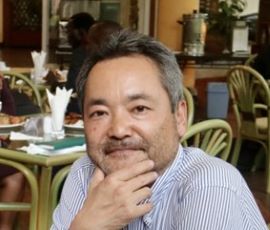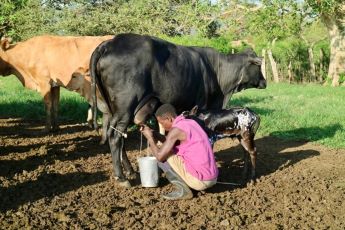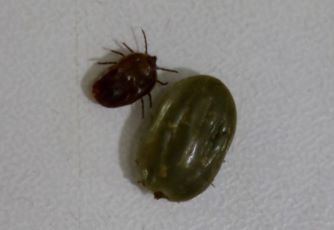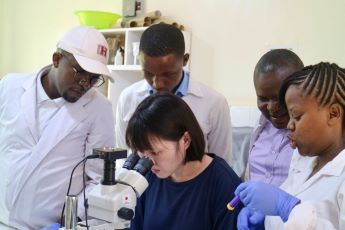- Home
- Social Action
- ★One Health Relay Report #36★
About "Field Activities"

Profile #36: Dr. YOKOYAMA Naoaki, Professor
WOAH Reference Laboratory for Bovine Babesiosis and Equine Piroplasmosis,
Research Unit for Molecular Diagnostics, National Research Center for Protozoan Diseases,
Obihiro University of Agriculture and Veterinary Medicine
【Research Topics】
・Diagnostics and Epidemiology of Bovine and Equine Piroplasmosis
~Let’s go to the field to bridge the gap between lab research and practical application~
In September 2023, I visited Kiboga, a town in Uganda known for its thriving dairy farming industry. As part of a JICA grassroots project, my main objective was to offer technical support and education to local clinical veterinarians and farmers. Uganda, situated in the middle of Africa, had fewer mosquitoes due to its high altitude, but we had to deal with tsetse flies in some areas. The livestock industry in Uganda appeared to be less efficient and economically challenging compared to its neighbor, Kenya. A major concern was the emergence of acaricide-resistant ticks and the prevalence of bovine piroplasmosis and anaplasmosis, conditions for which no treatments are available in Uganda. Despite our efforts to share insights on managing bovine piroplasmosis using diagnostic methods such as PCR*1and ELISA*2, drugs such as diminazene aceturate and imidocarb dipropionate, and systematic tick control measures, the local veterinarians expressed their financial constraints in pursuing these strategies. The regional veterinary office in Kiboga is equipped with microscopes, incubators, freezers, and batteries, but it lacks equipment necessary for PCR or ELISA testing. Consequently, we relied on the microscope to share expertise, enabling them to identify tick species and detect piroplasma and Anaplasma in blood samples. However, the challenges remained substantial, and the problems persisted unresolved. This experience taught me a valuable lesson: no matter how advanced the techniques and technologies developed in our laboratories may be, their practical application in resource-limited regions like Kiboga is constrained. This raises a critical question – what is the value of cutting-edge research if it cannot be seamlessly applied in the field? Bridging the gap between advanced research and practical solutions in the field is a challenging but of paramount importance. My approach is to be on the ground, understand the issues, and drive research to make a real impact.
*1 Polymerase Chain Reaction, a genetic diagnostic method
*2 Enzyme-Linked Immunosorbent Assay, a serodiagnostic method


A farmer in Uganda is milking a cow. Ticks collected in Uganda

A practical session on tick species identification using a microscope
(center: Dr. SHIRAFUJI Rika)
